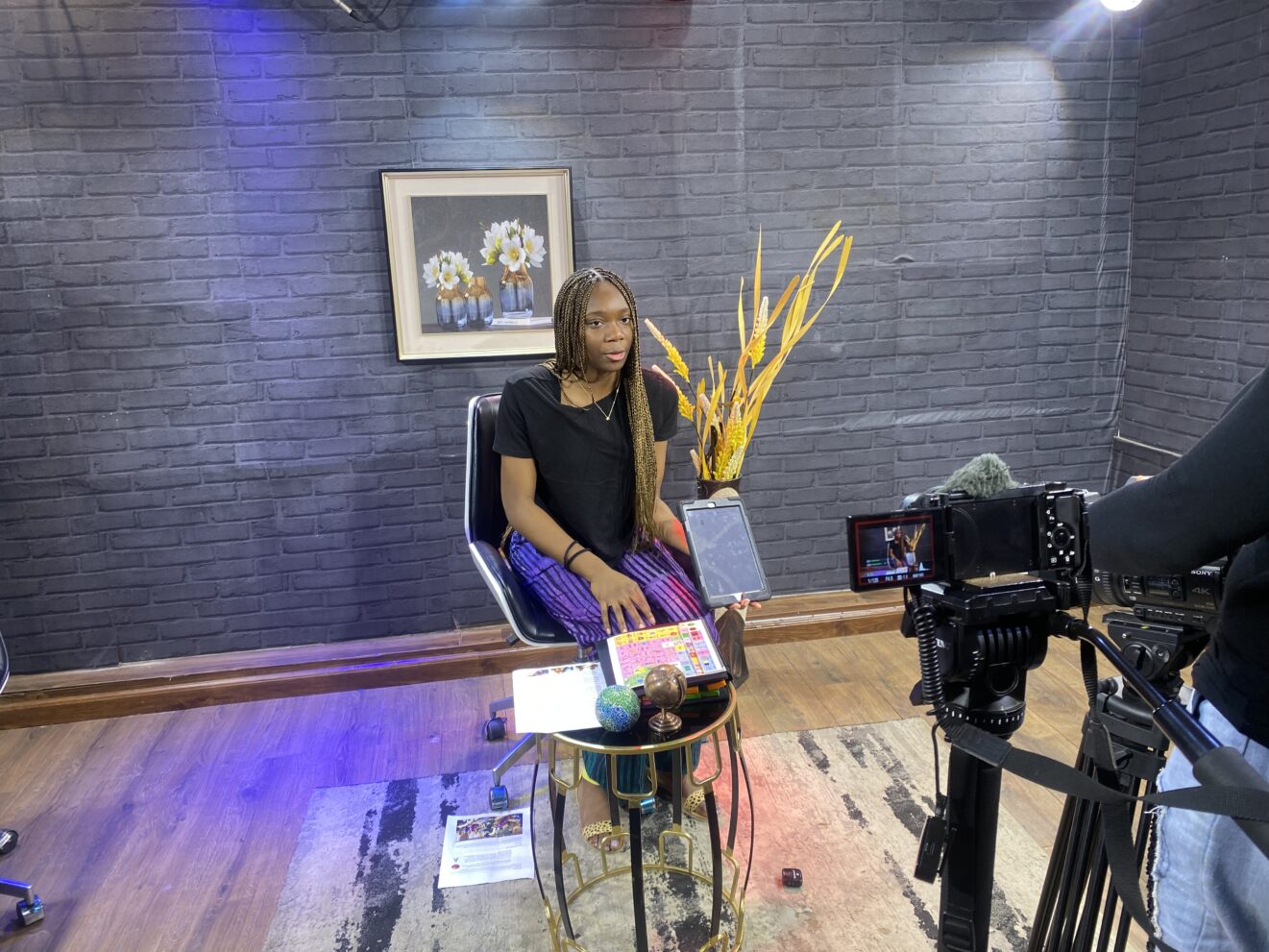The Youth Action Council (YAC) of Easter Seals Greater Houston is a student-led group that encourages community leadership, emphasizes youth engagement, and supports the ESGH mission. Their work reaches beyond Houston—sometimes even overseas.
In November 2024, YAC member Fife Famurewa asked the BridgingApps lab for a loaner device she could take to a MedTech Symposium in Lagos, Nigeria. She left in January, equipped with a shareable guide and an iPad loaded with communication and medical-management apps.
Fife is a high school junior and founder-president of the Sports for Special Needs Club at the Kinkaid School. This is her account of that week in Nigeria.
I’d been to Nigeria once, for a family event when I was much younger, but I don’t remember much about that now. Therefore, the MedTech Symposium experience was very meaningful to me. In addition to sharing about assistive technology, I was able to take in my family’s culture through traditional meals, clothing, and market bargaining.

Sharing About AT
I have a passion for mechanical engineering and finding ways it can help people with disabilities. While I couldn’t be an official part of the symposium, faculty from a local school heard about the assistive technology [AT] I brought from Easter Seals. That led to my giving AT presentations for 9-to-12-year-olds, with and without autism, at two schools. I was able to send the students home with copies of BridgingApps’ information document.
The Jabberwocky app caught the most attention: it uses face-tracking technology, similar to eye-gaze, to track the user’s head movements. Simply Sayin’ Medical Jargon was also popular because of its practical use in simplifying medical jargon for children undergoing procedures.
Besides the school presentations, I was invited for an interview on the local Voice of the People TV (VOP TV) news station. We talked about specific AT apps, the possibilities for children with autism and other communication disabilities, the global importance of assistive technology, and how AT could be further introduced in Lagos.
Expanding Possibilities
After the interview, a local journalist asked if they could write an article to further share about my work and the importance of assistive technology in Nigeria. [Watch the BridgingApps blog and social media for updates on that.] The Easter Seals Assistive Technology Program was mentioned at the school presentations, in the TV interview, and in the article!
I hope that I helped grow new understanding of how technology can build bridges between children with communication challenges and the rest of their peers. And of how AT can be used to support the medical field as well as people in their everyday lives. In Nigeria, there is no government subsidy for AT products, meaning families must pay the full cost for any type of assistive equipment. There’s been some progress (see “Investment Case for Assistive Technology in Nigeria” by the National Commission for Persons with Disabilities), but the lack of support remains a challenge.
What I Brought Back
While I ventured to Nigeria to share a small piece of the possibilities of American technology, I also returned with a deeper understanding of Nigerian culture, from clothing to food to schools. Within the Lagos schools, I was able to experience classroom settings directly. Aspects such as the deep respect students have for their professors, and every school (public or private) requiring a uniform, gave me a new perspective on international differences between schools.

